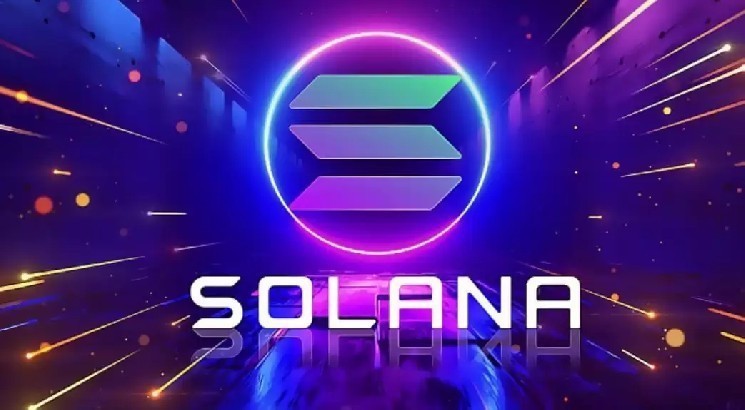This content discusses Solana, a blockchain network, and its proposal to increase the block compute limit (BCU), a critical parameter that defines the maximum computational power validators can process within a single block. The proposal aims to enhance the network’s throughput, particularly by addressing the limitations of DEXs and Maximum Extractable Value (MEV) auctions. The Solana Developers Plan outlines this change, which is expected to be part of Solana’s upcoming software framework, SIMD-0286, which will become operational with a future epoch once a majority of network validators accept the upgrade.
According to the proposal posted on the Solana Foundation’s GitHub page, the increase will raise the block compute limit from 60 million calculations per second (CU) to 100 million CUs. This move aims to allow applications requiring high computational power, such as orderbook-based decentralized exchanges (DEXs) and MEV auctions, to operate without encountering “computation budget exceeded” errors. However, the growing prevalence of applications like re-staking protocols, NFT minting, and DePIN projects is necessitating heavily increased transaction throughput, which would require more efficient and robust processing capabilities from validators.
The Solana network already implements this increase, with the block limit reaching 60 million CUs on July 23rd. During daylight hours, the network processes approximately 1,700 transactions per second. However, challenges continue to arise as applications emerge that demand greater block space, particularly for functionality-independent voting (FIIV) blocks and high-performance DEXs requiring “order book size” transactions. These applications have increasingly accessed the network’s full capacity, necessitating further upgrades to validators to support them.
The SIMD-0286 proposal, emerging around the same time as the block limit increase, is currently under discussion and evaluation by the community. Its launch is expected to happen within a few months, incorporating the previously announced SIMD-0256 implementation into Solana’s future software framework. Once activated, the simplex version of the proposal will come into play automatically in a future epoch, ensuring consistent updates to the network.
This block capacity increase is seen as a critical step in the competitive blockchain infrastructure development race. While other blockchain projects like Ethereum (with its Pectra hardfork and ephemeral data blobs for rollups) and increases to its DRec and SParc block capacities are also in the process of rolling out, Solana’s proposal is expected to solidify its leadership in the development of blockchain networks. The Solana community, comprised of blockchain developers, operators, and users, has expressed support for this proposal as it aligns with the goals of scaling the network for enhanced functionality and throughput.
While competing at the highest levels of the race, Solana is also discussing the implications of its block capacity increase. With a higher block size, Solana is expected to be more efficient in processing large-scale transactions, particularly for applications requiring high transaction throughput. The increase is expected to improve the scalability and resilience of the network, leveraging its unique blockchain design to distribute the computational load more evenly across validators.
DeFi users and developers are actively leveraging the enhanced block capacity, as the network now processes transactions in blocks supportable for the DEX-specific “order book size” (DExS) upgrade. This support is expected to further facilitate dynamic DEXs by simplifying on-chain transfer pricing (OTT) exchanges. As more developers adopt this infrastructure, the network’s position within the blockchain ecosystem will increasingly depend on its ability to reliably and efficiently process high-throughput transactions, including those executed across networks.
DeFi platforms such as Solana itself, Tez, and Vite have already started paving the way for these changes, with some projects now handling transactions for DExS independently of Solana’s block size. The faster processing capacity could enable faster DEX off-chain transactions, enhancing liquidity supply and circuit speed. This breakthrough could provide users with deeper liquidity pools and faster fee-driven liquidity (FDL) transactions, while reducing reliance on unverified zoom diamonds.
In broader terms, Solana’s block capacity increase represents a strategic shift toward expanding its utility beyond DeFi-focused applications. As the community decides, this increase could serve as a reversible milestone in Solana’s journey toward becoming a more universally accessible and highly scalable blockchain platform. The network’s vision is to not only enhance its own functionality but also to provide valuable tools for developers and developers to solve real-world problems.
In conclusion, the proposed block compute increase by Solana is a critical piece of the puzzle in a highly competitive blockchain ecosystem. This change, such as SIMD-0286, is expected to enhance Solana’s position in the network, enabling significant improvements in transaction throughput, flexibility, and scalability. The implications for developers, users, and existing projects are profound, offering unprecedented opportunities for development while simultaneously challenging the assertions and implementations of traditional blockchain projects. Moving forward, the outcome of this proposal will shape Solana’s next major step toward scalability and usability, aligning its future progress with the broader goals of the blockchain industry.


